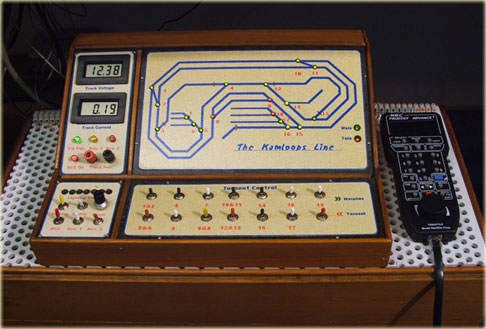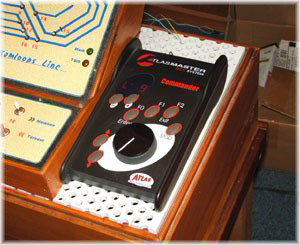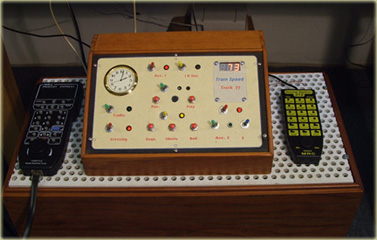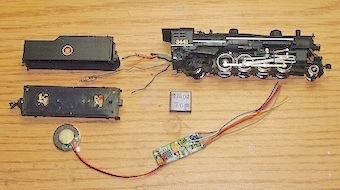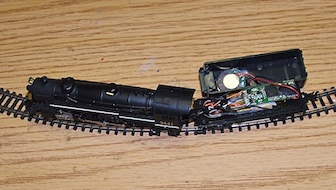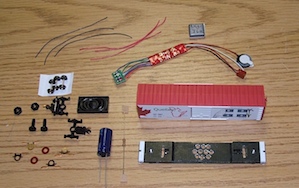  Parts for the Boxcar SoundHaving installed DZ125 decoders in the FTA&B units of my MTL Canadian Provinces Series locomotives, I now have a very special train, but without sound. I did not want to machine the frames of the FTA or B unit to make a sound decoder fit. It would mean taking a lot of metal material away and reducing the weight. The solution for sound came from Streamlined Backshop Services www.sbs4dcc.com in the form of their Boxcar Sound kit. The parts in the kit are shown here. The kit does not include the Digitrax DSN144 decoder or the boxcar.
This picture shows the boxcar frame where I have drilled the holes for the speaker and cut the slots for the power wires. |
|
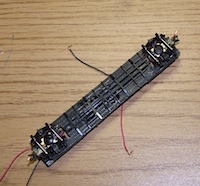  Boxcar frame undersideShown here is the underside of the MTL boxcar frame with the trucks reinstalled. The brass power contact can be seen where they attach under the truck mounting pivot screw and ride against the inside flange of the wheels. The red and black power wires are soldered to tabs on the inboard side of the contact strips. A kapton washer is placed between the contacts to insulate the left and right power sides. This was the most tedious part of this project. |
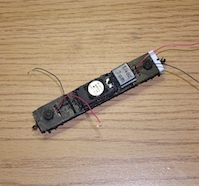  Boxcar frame topsideThe topside of the boxcar frame is where the speaker is attached. I used a silicone adhesive and allowed it to cure overnight. The power wires extend through the slots in the frame and the jam-nuts for the pivot screws are at the ends. I have placed one 1/4 oz weight on the frame near the speaker. Because of its cast aluminum frame the MTL Boxcar weighed in at 1.02 oz before modification. With the one weight, it now weighs 1.27 oz.
| |
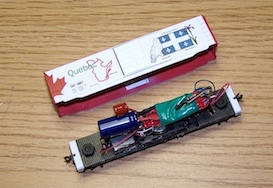  DSN144PS sound decoder Installed Here is the completed project. In this picture I have installed the 1000uF capacitor and also left the factory installed capacitor in the circuit. The 100 Ohm resistor is up and in the air. I left it in the open as it was getting quite warm. After programming it was barely warm. The rest of the wires and the unused decoder wires are bundled under the decoder. With the boxcar shell replaced and the car on a test track I changed the address and the sound scheme for diesel. The sound effects for this decoder are quite good and the speaker output has plenty of volume. I will use this sound boxcar in consist with my MTL Canadian Province Series FTA&B locomotives.
|
